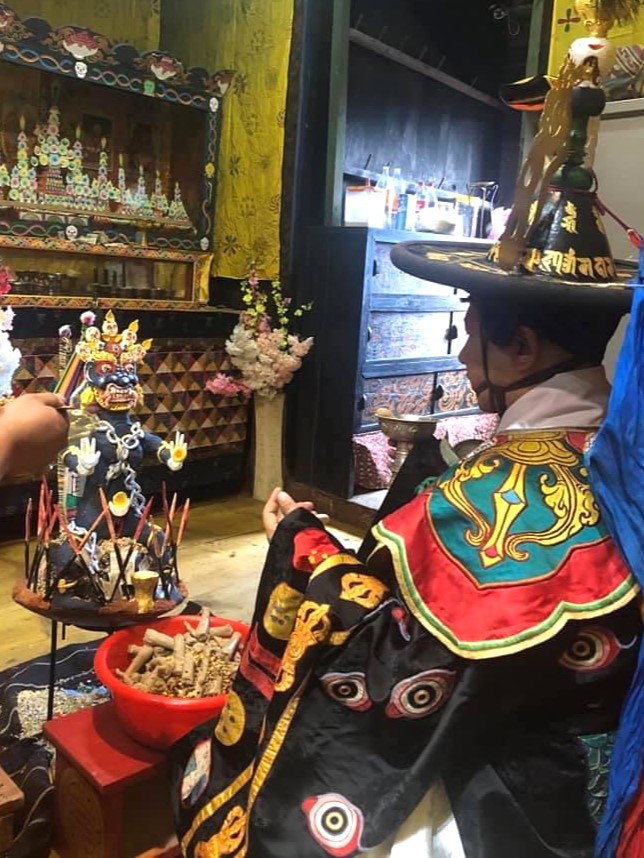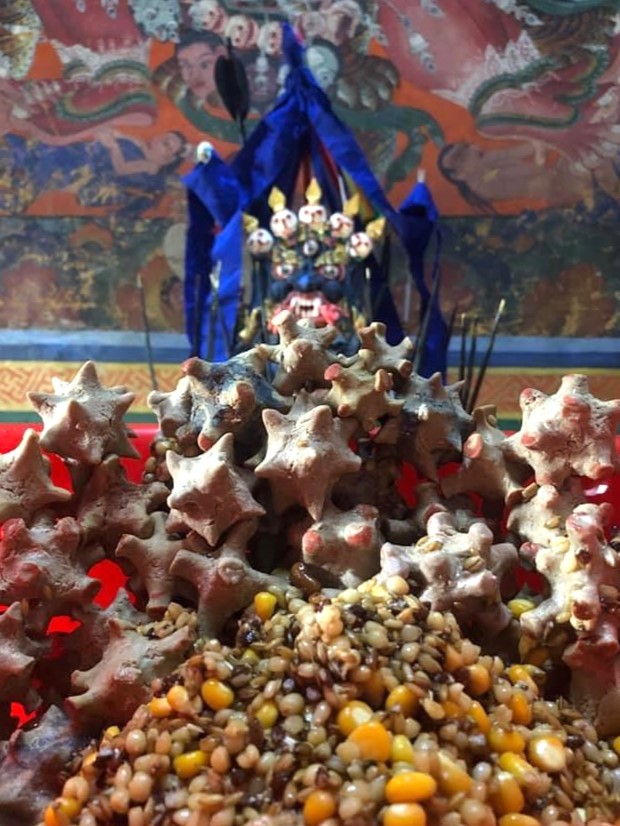Context
This project investigates historical and contemporary medico-religious responses to pandemic disease in Tibetan and Himalayan communities. We argue that the narratives of the 13th-century text Vase of Ambrosia (’Chi med bdud rtsi bum pa) refer to an outbreak of the Black Death in Tibet, which have now been re-imagined for COVID-19. The apotropaic amulet “Black-9 Pill” (nag po dgu sbyor) and anti-epidemic medical formulae also developed then and are now used globally to protect from and sometimes treat infectious disease. Moreover, repurposed rituals animate the more-than-human worlds of contemporary Bhutan, such as the offering of virus-shaped cakes to propitiate fierce goddesses. We will trace the legacy of pre-modern responses to pandemic disease and assess contemporary (re)interpretations of Buddhist end-times prophecies, medical therapies, and the spiritual ecologies of Tibet and the Himalayas.


Hypotheses
(1) The Vase of Ambrosia emerged as a direct response to an outbreak of the Black Death in Tibet. (2) The end-times prophecies, etiological categories, apotropaic pills, medical formulae, and ritual engagements with nonhuman pathogenic agents that developed during the 13th and 14th centuries have informed Tibetan and Himalayan responses to infectious disease down to the present. To test these hypotheses, we will reconsider prophetic narratives within the context of new genetic research on the Black Death, trace the historical development of pandemic etiologies and therapeutics, and ethnographically explore these and the more-than-human relationality of COVID-19 responses.
Approach
We approach the corpus of prognoses, protections, and prescriptions found throughout Tibetan Buddhism and Sowa Rigpa (Tibetan medicine) as “pandemic narratives,” which require inclusive interdisciplinary methods because of their transhistorical and globalized nature. We will philologically and ethnographically (in India, Nepal, and Bhutan; and online) analyze prophetic narratives, related ritual and medical instructions, evolving ideas of contagion, and the active roles of nonhuman forces as causes, culprits, and saviors.
Innovation
Incorporating recent genetic research, our textual analysis of Tibetan religious and medical sources will redefine current understandings of the Black Death and its global history. Combining philology and ethnography, we will present the first nuanced study of Sowa Rigpa theories of infectious disease and reveal how past narratives have informed present-day outbreak responses, highlighting the often-neglected agency of Tibetan and Himalayan nonhuman entities.
Primary researchers
Our multidisciplinary team: Historian of Tibetan religions, Asst. Prof. (NYU) Dr. William McGrath (postdoc) provides historical-textual foundations; medical anthropologist Dr. Barbara Gerke (PI) combines textual with qualitative ethnography; anthropologist, ethnobotanist, and Sowa Rigpa practitioner Dr. Jan van der Valk (postdoc) analyzes medico-religious interfaces and (ethno)ecologies.